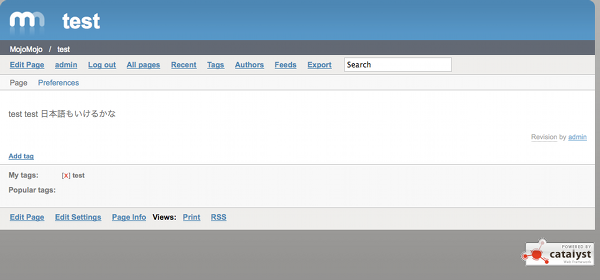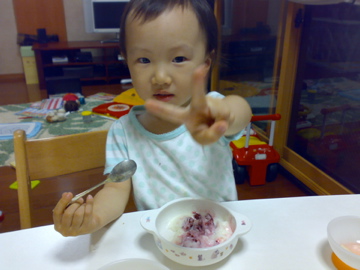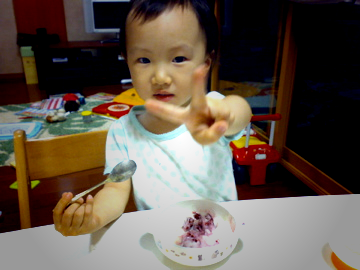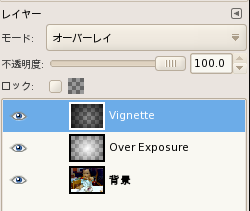MojoMojoというCatalystベースのWikiが気になったので手元のmacbookに入れてみた。

なかなか便利そう。
図書館も新着のRSSとか出すようにしたほうがいいと思うんだけどなぁ。良い本との出会いは心を豊かにするんだったら、出会う頻度をあげるような努力をするのもまぁ図書館の役割なんじゃないかなとか。
と、本当はそんなことはどうでもよくてMIME::Lite::HTMLってのを使えばURLを指定するだけで、HTMLをメールで送ってくれるってのが便利そうだったので、最近使い勝手の悪いサービスの中から適当なサンプルとして図書館の新着検索が選択されただけでした。
プルをプッシュに的な。
use MIME::Lite::HTML;
MIME::Lite::HTML->new(
From => 'kzfm@***.jp',
To => '***@gmail.com',
HTMLCharset => 'utf8',
Subject => '図書館新着',
Url => 'http://library.fujishi.jp/opw/******');
検索結果のURLを渡してHTMLCharsetをきちんと指定すればOK。あとはcronに登録。
22102008 chemoinformatics perl
Chemistry::Molでちょっとはまった。
Can't call method "symbol" on an undefined value
というエラーでつまづいた。
my $mol2 = $mol->clone;
Makes a copy of a molecule. Note that this is a deep copy; if your molecule has a pointer to the rest of the universe, the entire universe will be cloned! my $mol2 = $mol->safe_clone;
Like clone, it makes a deep copy of a molecule. The difference is that the copy is not "exact" in that new molecule and its atoms and bonds get assigned new IDs. This makes it safe to combine cloned molecules. For example, this is an error:
# XXX don't try this at home!
my $mol2 = Chemistry::Mol->combine($mol1, $mol1);
# the atoms in $mol1 will clash
But this is ok:
# the "safe clone" of $mol1 will have new IDs
my $mol2 = Chemistry::Mol->combine($mol1, $mol1->safe_clone);
21102008 perl
こんな感じで肥大化するリストをつくると(実際にやりたいことは実行途中のあるタイミングでリストの先頭に戻ってループさせながらリストを大きくしたい)
my @l = (0);
for my $n (@l) {
push @l,$n+1;
print $n,"\n";
}
数百万件のデータを処理したいので、これをDBIx::Classを使ってやろうと。
で、こんな風に書きました。
#!/usr/bin/perl
#-- tables
#
#create table compounds (
# id integer PRIMARY KEY not null,
# num integer not null
#);
#insert into compounds values(null,1);
package TestSchema;
use strict;
use base qw/DBIx::Class::Schema::Loader/;
__PACKAGE__->loader_options(
debug => 1,
exclude => qr/^sqlite_/,
);
package Main;
my $schema = TestSchema->connect('dbi:SQLite:dbname=test.db');
my $rs = $schema->resultset('Compounds')->search;
while (my $row = $rs->next) {
my $n = $row->num;
$schema->resultset('Compounds')->create({num => $n+1});
printf "* %s\n", $n;
}
この場合、データの行数が一つだとうまくいかない(next一回で終了してしまう。2個以上データが入っていればリストの時のコードの様に動く)。でも、初期データは一つしかないので困る。ダミーでなんか入れとけばいいのだけど、BFSっぽく繰り返したい場合ダミーのデータは邪魔だし、なんか無駄なことやっている気がする。
うまいやり方ないもんか。
18102008 perl
いくつかあやふやな知識が解消されてよかった。
続・初めてのPerlと一緒に読むか併せて読めばよいのではなかろうか?
 続・初めてのPerl 改訂版
続・初めてのPerl 改訂版10102008 perl
CPANって地味に凄いなと。
An automated check of reports sent to CPAN Testers detected some issues with
your CPAN Testers configuration. Please check your configuration and upgrade
out-of-date modules to help ensure your test reports are consistent with
the latest bug fixes and CPAN Testers standards.
Issues are listed in YAML format with number of occurrences by architecture and
Perl version since the last notification. If you upgraded recently, this list
may cover reports since the notice, but prior to your upgrade. If so, please
disregard those items.
---
i386-linux:
5.8.8:
CPAN::Reporter out-of-date (1.08 < 1.17): 1
Test::Reporter out-of-date (1.38 < 1.5): 1
早速アップデート
08102008 perl
ごくたまにこんなことやりたかったりすることありますよね。
use File::Tail;
sub get_ip{
my $line = File::Tail->new(name => "/var/log/httpd/access_log", tail => 1)->read();
my ($ip) = split / /, $line;
return $ip;
}
print "Content-Type: text/plain\n\n", get_ip();
rootじゃないとアクセスできないのでsetuidする必要がありますが、それだけだとエラー吐いてうごかないので、fedora8もそれ用のperlが必要。
yum install perl-suidperl
スクリプトも
#!/usr/bin/suidperl
ではじめる必要がある。
12092008 perl
自分のブログをブックマークしたひとのはてダをLDRで購読する事が多いので、scrapeしてURLを表示させてみる
use URI;
use Web::Scraper;
use List::MoreUtils qw/uniq/;
my $uri = URI->new('http://b.hatena.ne.jp/bookmarklist?url=http://blog.kzfmix.com');
my $scraper = scraper {
process 'dt.bookmarker a',
'users[]'=> '@href';
};
my $res = $scraper->scrape($uri);
print join "\n", map { s/b.hatena/d.hatena/;$_} uniq(@{$res->{users}});
あとはこの結果をGmailに送ればよいような。
10092008 perl
lomo風にしてみたくなった。

NK705で撮ったサンプルをlomo風味に。

コード
use Imager;
my $source = shift;
my $lsat = 0.0;
my $usat = 0.2;
my $contrast = 1.5;
my $scale = 1.5;
my $img = Imager->new();
$img->read(file => $source);
my ($halfwidth, $halfheight) = ($img->getwidth/2, $img->getheight/2);
my ($endx, $endy);
if($img->getwidth > $img->getheight){
$endx = $img->getwidth;
$endy = $halfheight;
}
else {
$endx = $halfwidth;
$endy = $img->getheight;
}
# contrast & sat
$img->filter(type=>"contrast", intensity=>$contrast);
$img->filter(type=>"autolevels", lsat=>$lsat, usat=>$usat);
# fountain
my $overexpo = $img->copy;
$overexpo->filter(type => "fountain",
ftype => 'radial',
channels => 2,
xa => $halfwidth,
ya => $halfheight,
xb => $endx,
yb => $endy);
my $vignette = $overexpo->scale(
scalefactor=>$scale
)->crop(
left=>($scale-1)*$halfwidth,
top=>($scale-1)*$halfheight,
width=>$img->getwidth,
height=>$img->getheight
);
$img->compose(src=>$nradial,tx=>0,ty=>0,opacity=>0.6,combine=>"mult");
$img->compose(src=>$overexpo,tx=>0,ty=>0,opacity=>0.4,combine=>"subtract");
$img->write(file => "lomonized.png");
こんな感じのレイヤーを重ねたイメージ。

GIMP Lomo Pluginのソースを見ながらつくったのだけど、Imagerのアルファチャンネルの使い方がよくわからなかったのでちょっとさぼってる。そのせいで白のあたりが飛んでしまうのが気に入らない。
10092008 perl
Chart::Clickerを試してみた
use Chart::Clicker;
use Chart::Clicker::Data::Series;
use Chart::Clicker::Data::DataSet;
my $cc = Chart::Clicker->new;
my $series = Chart::Clicker::Data::Series->new(
keys => [ 1, 2, 3, 4, 5, 6, 7, 8, 9, 10 ],
values => [ 42, 25, 86, 23, 2, 19, 103, 12, 54, 9 ],
);
my $series2 = Chart::Clicker::Data::Series->new(
keys => [ 1, 2, 3, 4, 5, 6, 7, 8, 9, 10 ],
values => [ 67, 15, 6, 90, 11, 45, 83, 11, 9, 101 ],
);
my $ds = Chart::Clicker::Data::DataSet->new(series => [ $series, $series2 ]);
$cc->add_to_datasets($ds);
$cc->draw;
$cc->write('foo.png')
Cairoベースなので結構きれい。

最近はグラフはもっぱらmatplotlibなんですが、使い分けられればいいかもしれない。